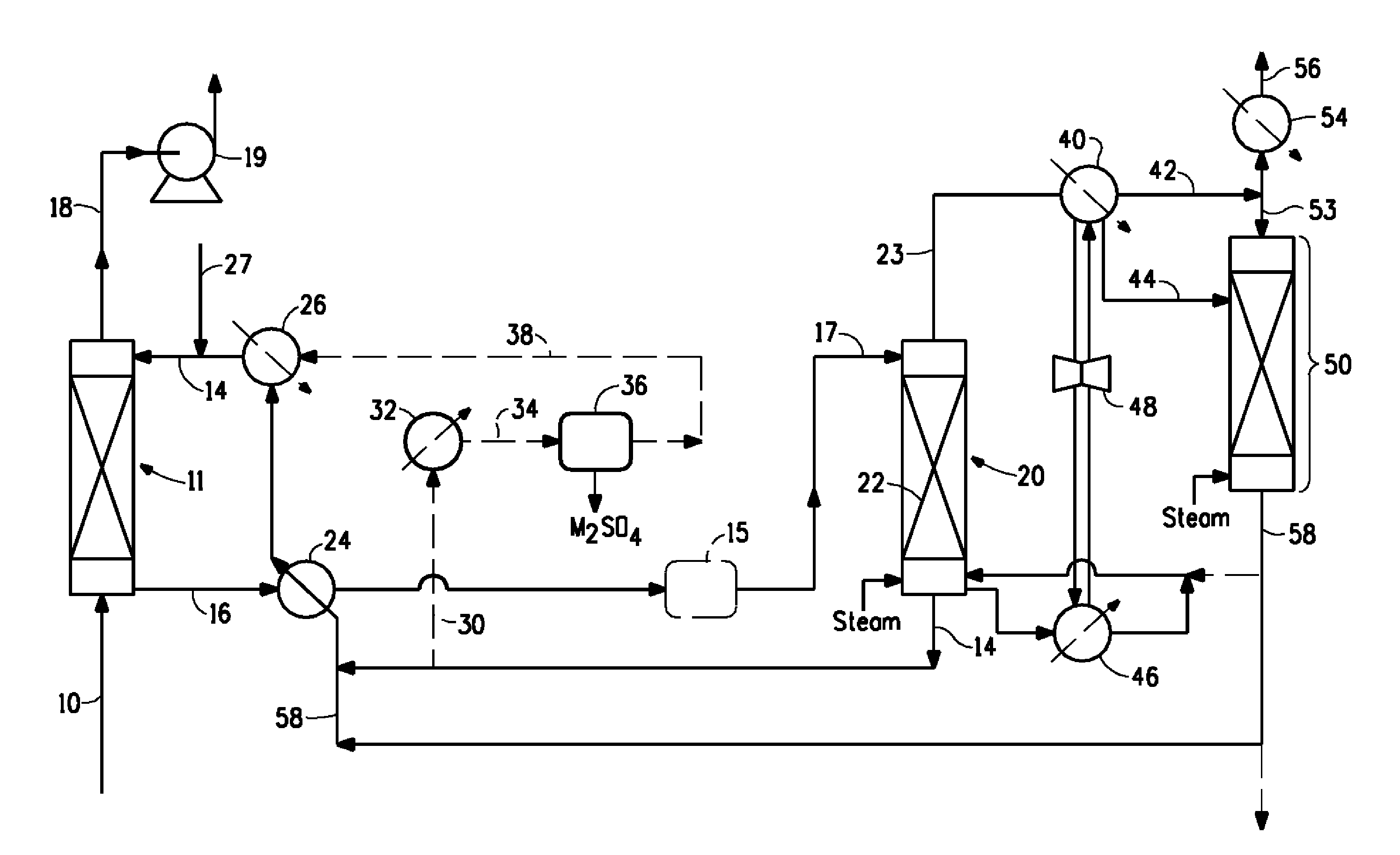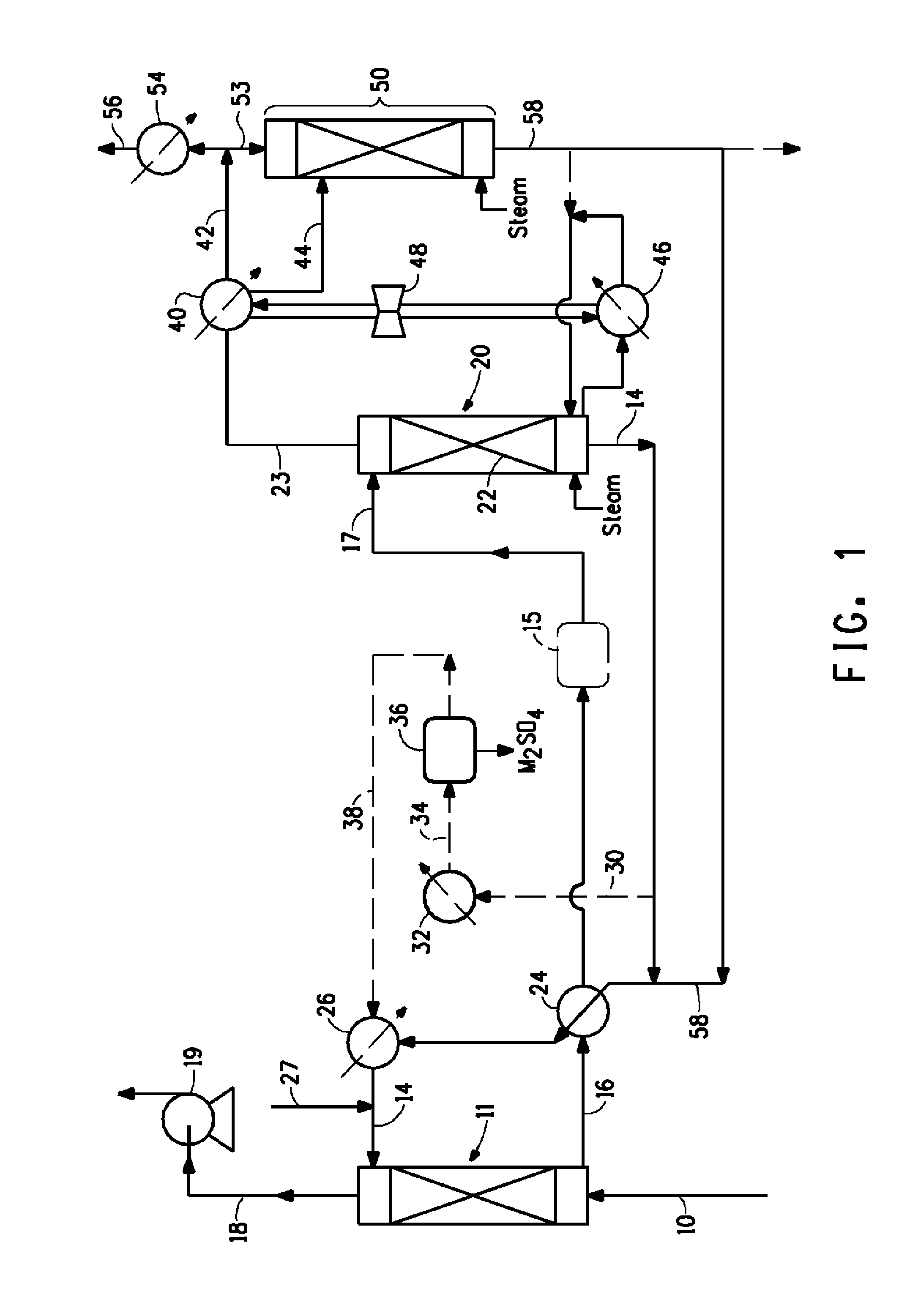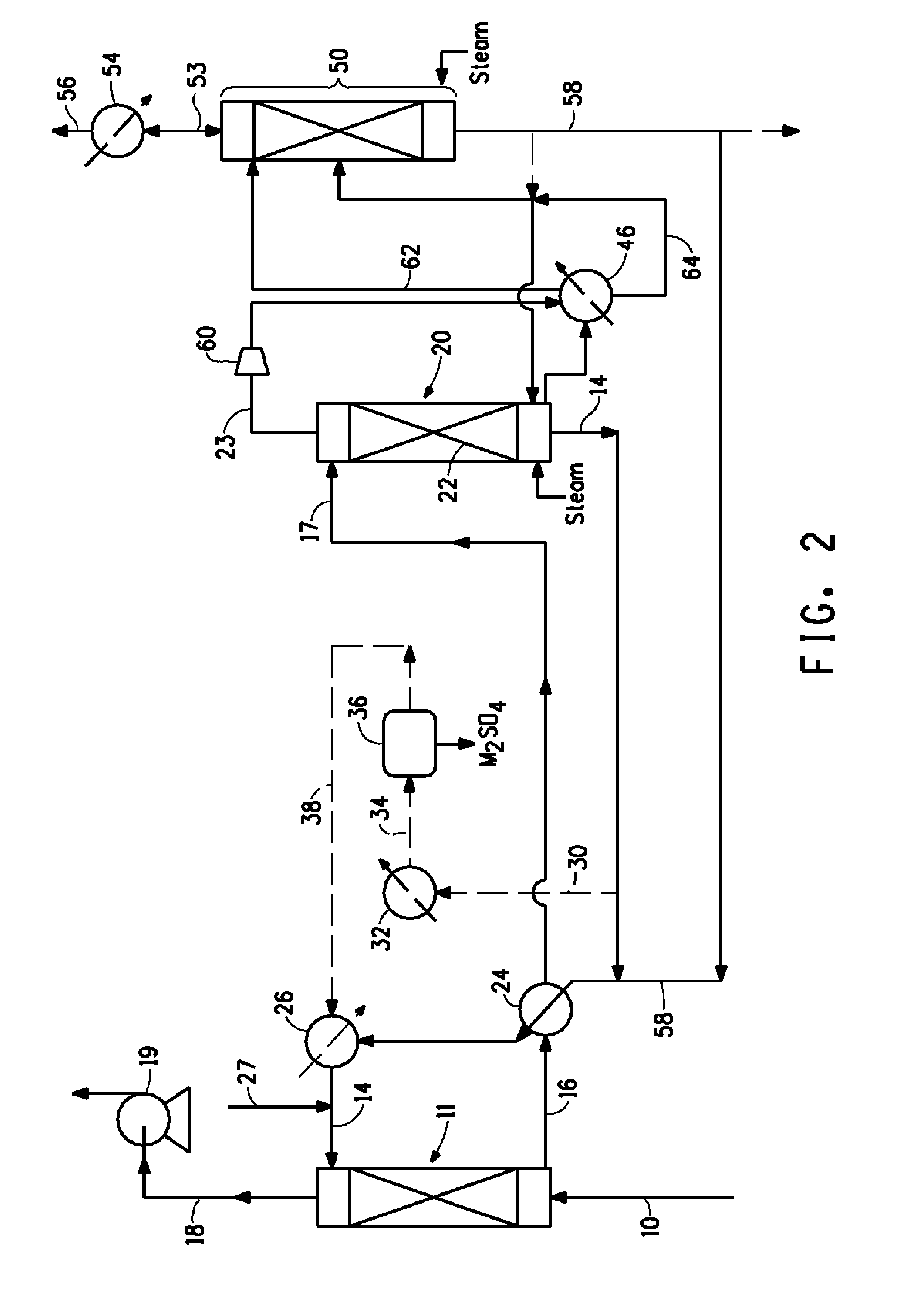Regenerative recovery of sulfur dioxide from effluent gases
a sulfur dioxide and effluent gas technology, applied in the direction of bulk chemical production, separation processes, human health protection, etc., can solve the problems of increased sulfur dioxide emissions, increased regulatory pressures to reduce sulfur dioxide emissions, and variable costs due to lime consumption. , to achieve the effect of improving energy efficiency
- Summary
- Abstract
- Description
- Claims
- Application Information
AI Technical Summary
Benefits of technology
Problems solved by technology
Method used
Image
Examples
example 1
Batch Absorber Experiments
[0076]The following experiments were conducted in a batch absorber wherein a sulfur dioxide-containing gas was fed via a sparger below the liquid level in a vessel containing an aqueous absorption solution comprising various polyprotic carboxylic acid salts and the composition of the exhaust gas was monitored. A schematic of the experimental apparatus is shown in FIG. 3.
[0077]The sulfur dioxide-containing inlet gas 101 to be treated comprised nitrogen saturated with water vapor and a controlled concentration of sulfur dioxide. Temperatures (T) and pressure (P) were monitored during the experiment and gas samples (S) were taken at different times during the experiment. T1 and P1 are temperature and pressure sensors of inlet gas 101. S1 is a sampling point for inlet gas 101. T2 is a temperature sensor of the liquid in the vessel. T3 is a temperature sensor of exhaust gas 102.
[0078]In these experiments and other experiments reported in the Examples below, the ...
example 2
Absorber Column Experiments
[0083]In the following experiments a gas comprising nitrogen and oxygen saturated with water and containing sulfur dioxide was contacted with an absorption solution in a counter current absorber column.
[0084]A schematic of the experimental apparatus is shown in FIG. 5. Fresh absorption solution 201 was introduced to absorber column 202. Counter current absorber column 202 was equipped with 1.92 meters (75.5 inches) of structured packing and was operated at a temperature of 33.4° C. and at atmospheric pressure (1 atm=101.3 kPa). Inlet gas 203 was introduced to the bottom of absorber column 202. Exhaust gas 204 was removed from the top of absorber column 202. The compositions of inlet gas 203 and exhaust gas 204 were monitored and are reported in Table 3. Fresh absorption solution 201 comprised an aqueous solution of sodium malate and ascorbic acid as an oxidation inhibitor. In the experiments, gas samples could be taken along absorber column 202 via various...
example 3
Stripper Experiments
[0086]In the following experiments a sulfur dioxide-enriched absorption solution was stripped to remove sulfur dioxide by heating the solution.
[0087]A schematic of the experimental apparatus is shown in FIG. 6. Feed reservoir 301 contains sulfur dioxide-enriched absorption solution 302 collected during the absorption experiments. Absorption solution 302 comprised an aqueous solution containing 24% sodium malate and 3.7 weight % sulfur dioxide by weight. Absorption solution 302 was fed as monitored by burette 303 at a rate of 47.2 grams / minute using first positive displacement pump 304 to stripper column 306. Absorption solution 302 was pumped through first pump 304 and preheated in hot bath 305 and fed to stripper column 306 consisting of 35 trays. The top portion 307 of stripper column 306 contained 25 trays (stages) and the bottom portion 308 of stripper column 306 contained 10 trays (stages).
[0088]Stripper column 306 was operated at atmospheric pressure (1 atm...
PUM
 Login to View More
Login to View More Abstract
Description
Claims
Application Information
 Login to View More
Login to View More - R&D
- Intellectual Property
- Life Sciences
- Materials
- Tech Scout
- Unparalleled Data Quality
- Higher Quality Content
- 60% Fewer Hallucinations
Browse by: Latest US Patents, China's latest patents, Technical Efficacy Thesaurus, Application Domain, Technology Topic, Popular Technical Reports.
© 2025 PatSnap. All rights reserved.Legal|Privacy policy|Modern Slavery Act Transparency Statement|Sitemap|About US| Contact US: help@patsnap.com



